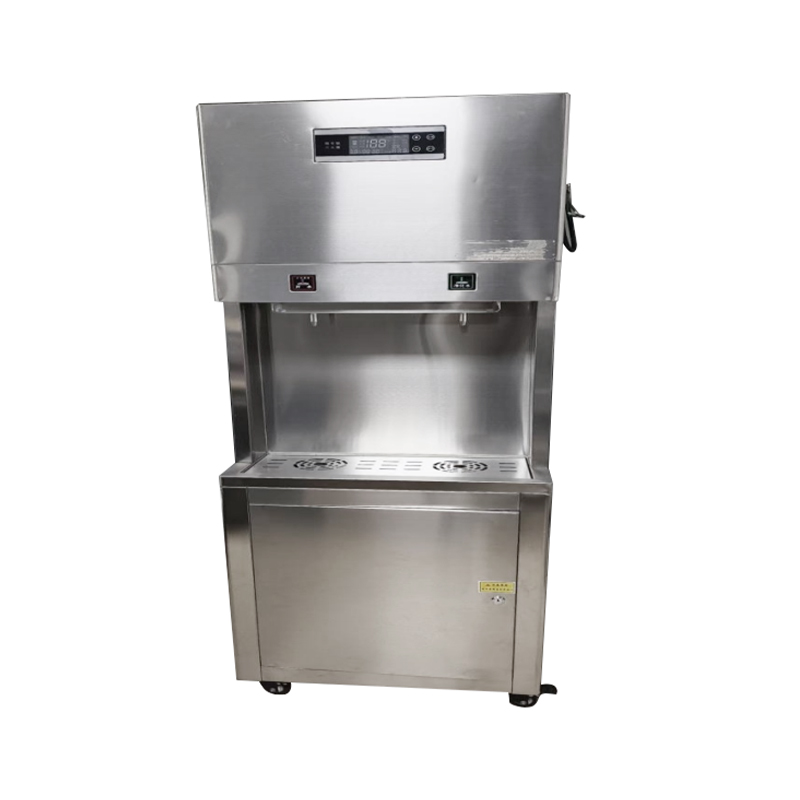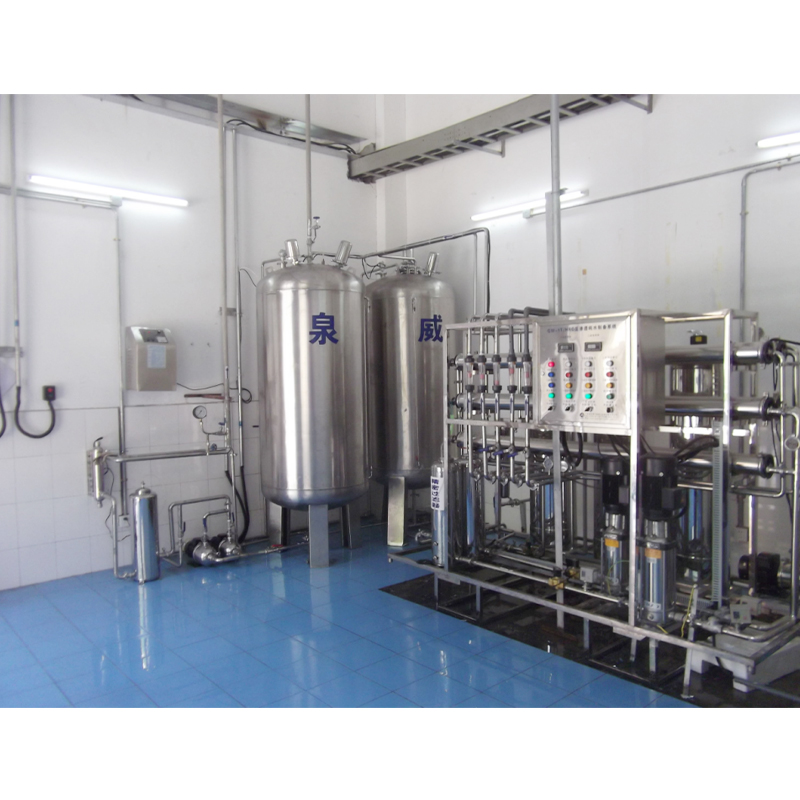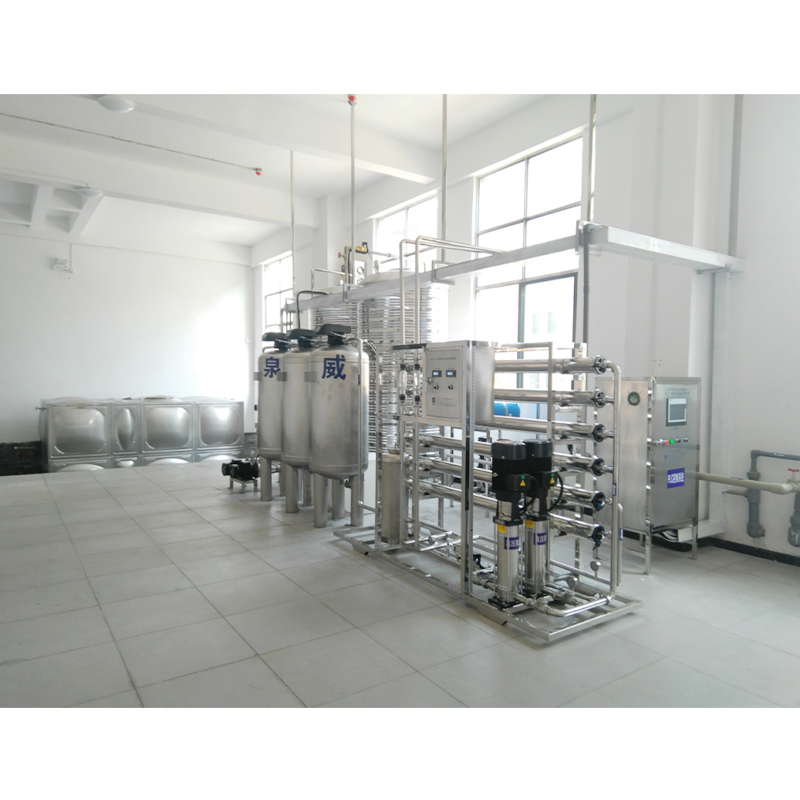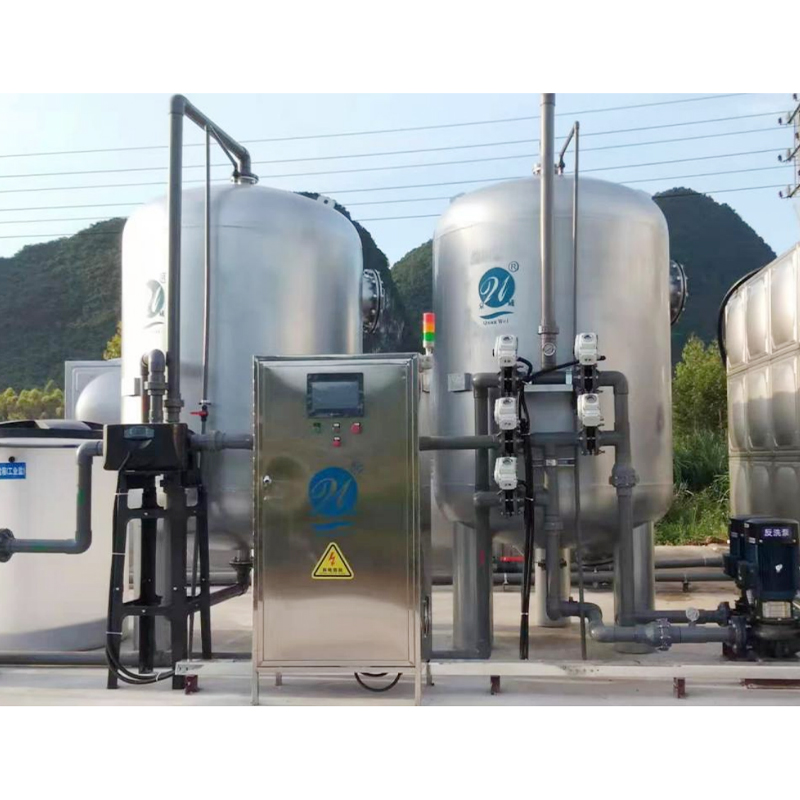How do commercial water dispensers protect the health of every drop of water?
Release Time : 2025-08-21
In crowded places like homes, schools, hospitals, airports, train stations, and businesses and institutions, commercial water dispensers have become essential for daily drinking water access. They not only fulfill the basic function of "quenching thirst," but also shoulder the crucial responsibility of ensuring drinking water safety. However, issues such as water source contamination, secondary contamination, and bacterial growth remain a focus of public concern. Commercial water dispensers must implement a multi-faceted approach, encompassing source purification, sterilization, material safety, and intelligent management, to truly "protect the health of every drop of water."
1. Multiple Filtration: Intercepting Impurities at the Source
The first line of defense for commercial water dispensers is a high-efficiency filtration system. High-quality equipment typically utilizes a multi-stage filtration process to gradually remove various contaminants from the water. The first-stage PP cotton filter traps large particles of impurities such as silt, rust, and suspended solids. The second-stage activated carbon filter effectively absorbs residual chlorine, discoloration, odor, and some organic matter, improving taste. The third-stage fine filtration membrane (such as RO reverse osmosis or ultrafiltration) is the core. RO membranes remove minute harmful substances such as heavy metals, bacteria, viruses, and pesticide residues, resulting in water that is close to pure water standards. Ultrafiltration membranes effectively trap bacteria and colloids while retaining minerals. This scientific combination ensures that every drop of water entering the heating system is clean, transparent, and safe to drink.
2. Deep Sterilization: Eliminate Microbial Contamination
Even after filtration, chlorine-resistant bacteria or secondary contamination may still exist in water. To address this, modern commercial water dispensers are commonly equipped with multiple sterilization technologies. Ultraviolet (UV) sterilization is a common method, using a specific wavelength of ultraviolet light to destroy the DNA structure of bacteria and viruses, achieving a sterilization rate of up to 99.9% and leaving no chemical residue. Some high-end models also incorporate ozone disinfection or high-temperature pasteurization to regularly sterilize the water tank and piping, preventing the growth of biofilm or Legionella bacteria during long-term use. These models are particularly suitable for locations with stringent hygiene requirements, such as hospitals and schools.
3. Food-Grade Materials: Eliminating "Self-Contamination"
The material safety of the water dispenser itself is also crucial. Low-quality plastic or metal components can leach harmful substances, causing "secondary contamination." High-quality commercial water dispensers utilize food-grade 304 stainless steel or NSF-certified lead-free materials for internal water flow, which are corrosion-resistant and leach-free, ensuring pure water quality. Contact components such as the faucet and water tray are also antimicrobial treated to inhibit bacterial adhesion. The entire unit design complies with the national "Standards for the Hygiene, Safety, and Functional Evaluation of Drinking Water Treatment Processors," eliminating material-related health risks at the source.
4. Intelligent Circulation and Closed System: Preventing "Stagnant Water"
Traditional water dispensers often produce "repeatedly boiled water" or "stagnant water" due to prolonged periods of ineffectiveness, affecting water quality and taste. Commercial models address this pain point through intelligent water circulation systems: The devices can schedule water circulation and, combined with temperature management, prevent water from stagnating in high-temperature areas for extended periods. Furthermore, their fully enclosed water circuit design reduces air ingress and the risk of dust and microbial contamination. Some models also feature metered water delivery and instant hot-drink functionality, heating on demand and reducing energy consumption and water quality loss caused by repeated heating.
5. Intelligent Monitoring and Maintenance Reminders: Making Safety Visible
Modern commercial water dispensers are becoming intelligent. Using built-in sensors and IoT technology, they monitor key parameters such as water TDS, filter life, and water temperature in real time, automatically prompting replacement when the filter expires or experiences abnormalities. Some devices also support remote management, allowing managers to view device status via mobile phones or platforms, ensuring timely maintenance and efficient management. This transparent, data-driven management approach makes drinking water safety more accessible.
Protecting the health of every drop of water is not only a technological achievement, but also a responsibility. A high-quality commercial water dispenser, like a silent "water quality guardian," transforms tap water into safe, clean, and delicious drinking water through multiple filtration processes, deep sterilization, safe materials, and intelligent management. Whether it's during school breaks, in hospital wards, in airport terminals, or in office pantries, it silently ensures people's drinking water safety.
1. Multiple Filtration: Intercepting Impurities at the Source
The first line of defense for commercial water dispensers is a high-efficiency filtration system. High-quality equipment typically utilizes a multi-stage filtration process to gradually remove various contaminants from the water. The first-stage PP cotton filter traps large particles of impurities such as silt, rust, and suspended solids. The second-stage activated carbon filter effectively absorbs residual chlorine, discoloration, odor, and some organic matter, improving taste. The third-stage fine filtration membrane (such as RO reverse osmosis or ultrafiltration) is the core. RO membranes remove minute harmful substances such as heavy metals, bacteria, viruses, and pesticide residues, resulting in water that is close to pure water standards. Ultrafiltration membranes effectively trap bacteria and colloids while retaining minerals. This scientific combination ensures that every drop of water entering the heating system is clean, transparent, and safe to drink.
2. Deep Sterilization: Eliminate Microbial Contamination
Even after filtration, chlorine-resistant bacteria or secondary contamination may still exist in water. To address this, modern commercial water dispensers are commonly equipped with multiple sterilization technologies. Ultraviolet (UV) sterilization is a common method, using a specific wavelength of ultraviolet light to destroy the DNA structure of bacteria and viruses, achieving a sterilization rate of up to 99.9% and leaving no chemical residue. Some high-end models also incorporate ozone disinfection or high-temperature pasteurization to regularly sterilize the water tank and piping, preventing the growth of biofilm or Legionella bacteria during long-term use. These models are particularly suitable for locations with stringent hygiene requirements, such as hospitals and schools.
3. Food-Grade Materials: Eliminating "Self-Contamination"
The material safety of the water dispenser itself is also crucial. Low-quality plastic or metal components can leach harmful substances, causing "secondary contamination." High-quality commercial water dispensers utilize food-grade 304 stainless steel or NSF-certified lead-free materials for internal water flow, which are corrosion-resistant and leach-free, ensuring pure water quality. Contact components such as the faucet and water tray are also antimicrobial treated to inhibit bacterial adhesion. The entire unit design complies with the national "Standards for the Hygiene, Safety, and Functional Evaluation of Drinking Water Treatment Processors," eliminating material-related health risks at the source.
4. Intelligent Circulation and Closed System: Preventing "Stagnant Water"
Traditional water dispensers often produce "repeatedly boiled water" or "stagnant water" due to prolonged periods of ineffectiveness, affecting water quality and taste. Commercial models address this pain point through intelligent water circulation systems: The devices can schedule water circulation and, combined with temperature management, prevent water from stagnating in high-temperature areas for extended periods. Furthermore, their fully enclosed water circuit design reduces air ingress and the risk of dust and microbial contamination. Some models also feature metered water delivery and instant hot-drink functionality, heating on demand and reducing energy consumption and water quality loss caused by repeated heating.
5. Intelligent Monitoring and Maintenance Reminders: Making Safety Visible
Modern commercial water dispensers are becoming intelligent. Using built-in sensors and IoT technology, they monitor key parameters such as water TDS, filter life, and water temperature in real time, automatically prompting replacement when the filter expires or experiences abnormalities. Some devices also support remote management, allowing managers to view device status via mobile phones or platforms, ensuring timely maintenance and efficient management. This transparent, data-driven management approach makes drinking water safety more accessible.
Protecting the health of every drop of water is not only a technological achievement, but also a responsibility. A high-quality commercial water dispenser, like a silent "water quality guardian," transforms tap water into safe, clean, and delicious drinking water through multiple filtration processes, deep sterilization, safe materials, and intelligent management. Whether it's during school breaks, in hospital wards, in airport terminals, or in office pantries, it silently ensures people's drinking water safety.







